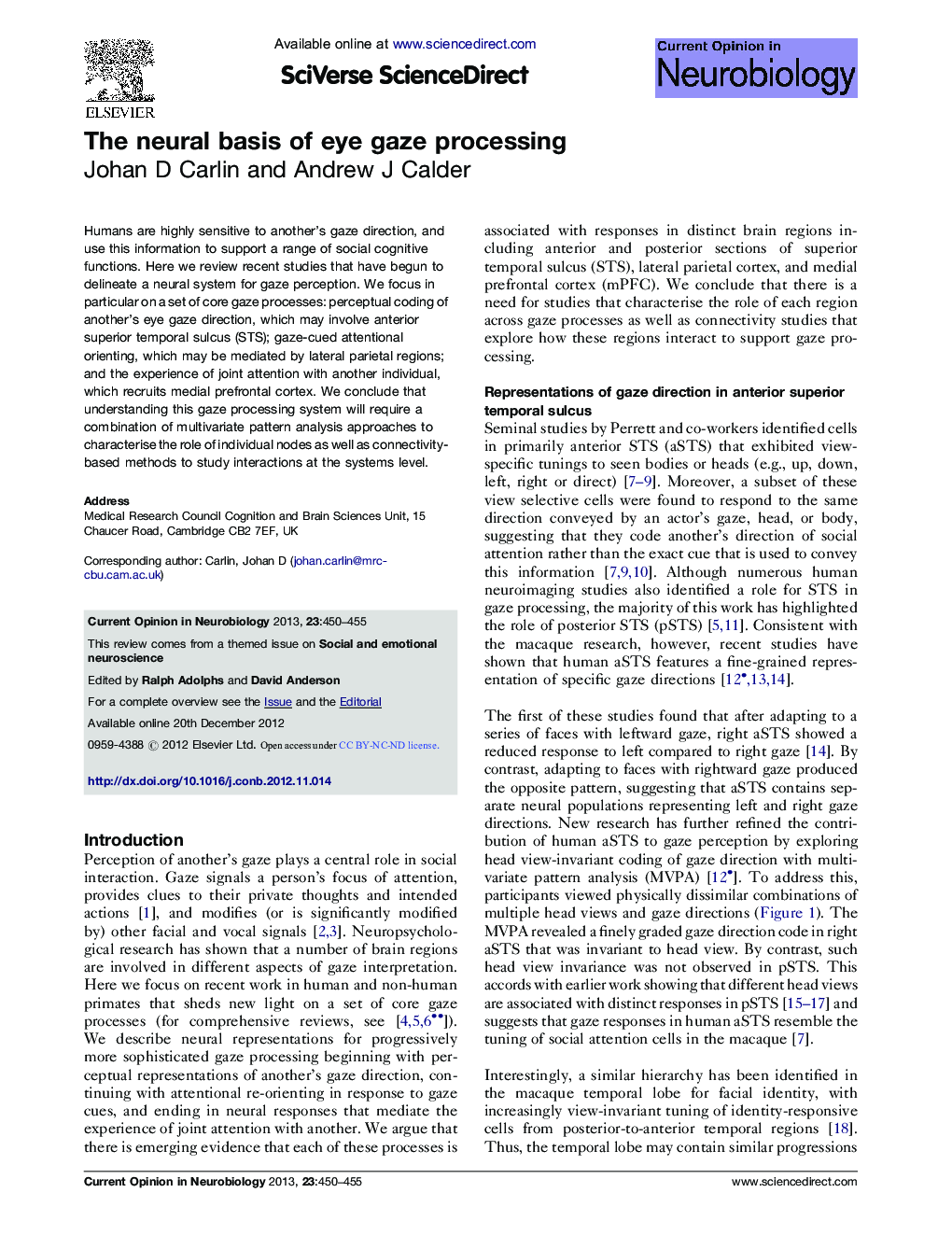| Article ID | Journal | Published Year | Pages | File Type |
|---|---|---|---|---|
| 6267192 | Current Opinion in Neurobiology | 2013 | 6 Pages |
Humans are highly sensitive to another's gaze direction, and use this information to support a range of social cognitive functions. Here we review recent studies that have begun to delineate a neural system for gaze perception. We focus in particular on a set of core gaze processes: perceptual coding of another's eye gaze direction, which may involve anterior superior temporal sulcus (STS); gaze-cued attentional orienting, which may be mediated by lateral parietal regions; and the experience of joint attention with another individual, which recruits medial prefrontal cortex. We conclude that understanding this gaze processing system will require a combination of multivariate pattern analysis approaches to characterise the role of individual nodes as well as connectivity-based methods to study interactions at the systems level.
⺠New human and macaque studies suggest a network of brain regions for gaze processing. ⺠Gaze direction may be mediated by anterior superior temporal sulcus. ⺠Attentional orienting by gaze may involve lateral parietal cortex. ⺠Joint attention may preferentially involve medial prefrontal cortex. ⺠Multivariate pattern and connectivity methods are needed to characterise this system.
